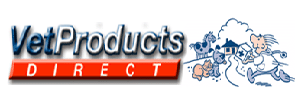When training a new behaviour the use of food as a lure and, once the behaviour has been learned, as a reward afterwards is a sensible practice in modern training.
However, if your dog is continuously rewarded/reinforced for the same behaviour it quickly learns to do the behaviour only if the food is around. If it can't see the food it basically goes on strike - a frustrating state of affairs.
In order to prevent this "why bother, will not do" attitude by your dog, the following tips are suggested:
- Some dogs are more motivated by food than other dogs but, since food is essential to survival, all healthy dogs at some stage of the day feel hungry.
- Before meals is an intelligent training time to teach a dog. There should be no such thing as a free lunch!
- If your dog hasn't finished its meal within 5 minutes, pick up the bowl until the next meal is due.
- Never, ever, leave food down for your dog to free feed during the day.
- Any food used for training should be part of your dog's daily calorie intake: the next meal should be reduced to take into account all training treats.
- When training something new, only use the same piece of food as a lure to entice a new behaviour AND as a reward from the same hand for a day or so.
- Continue to use a reward for another few training sessions, until the dog understands the behaviour, but reward from the other hand - with a different piece of food.
- Your hand action is quickly understood by the dog as being the hand signal for the behaviour.
- This signal should be gradually faded, or made less pronounced, until it is hardly noticeable.
- Start using the lure hand without any food in it.
- At first, reward your dog each and every time it does the new behaviour, but soon change to rewarding every second time, then every third time, etc.
- Now start to reward on a completely random or intermittent basis - the unpredictability will make your dog work far harder to earn the reward.
- Avoid keeping food in a place that is visible to the dog. Have the food treats out of sight, such as in a back pocket or on a plate.
According to one of the world's foremost Animal Behaviourist Veterinarians, Dr Ian Dunbar, your dog should soon understand:
- That if there is no treat in your hand, it might still be rewarded. Don't make the common mistake of rewarding sub-par performances; rewards for increasingly better performances should always be a surprise, not a right!
- That just because a treat is available, it doesn't mean it will necessarily get it.
- That just because there's no food treat on you, doesn't mean there's no reward at all. Food is sometimes not appropriate, or much less of a reward than what your dog wants to do right now.
- "Life rewards", such as chasing a toy, herding sheep, going for a walk in the park, having a ride in the car or playing with another dog are often more rewarding than food. They just take a bit longer than with food before your training session can restart!


